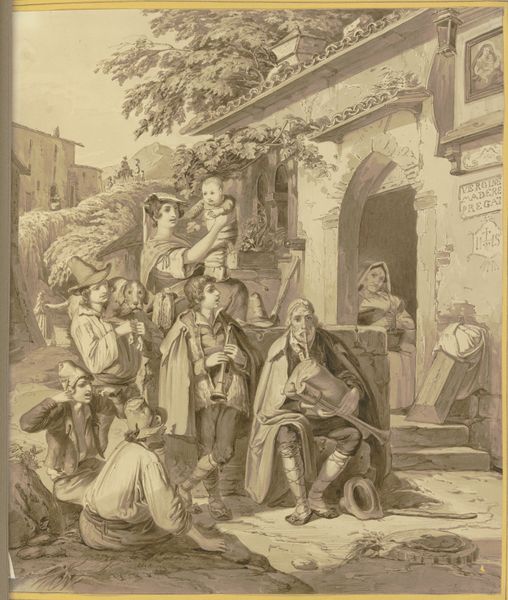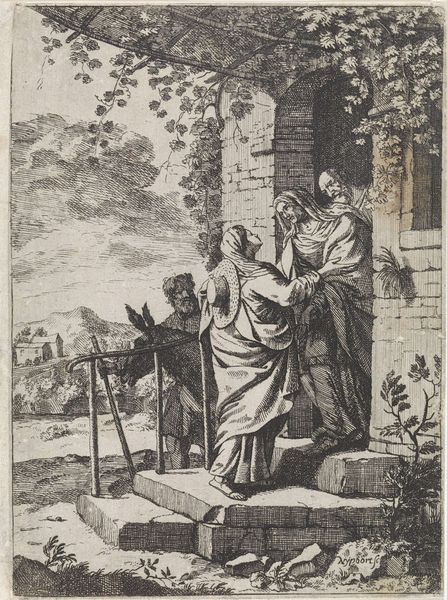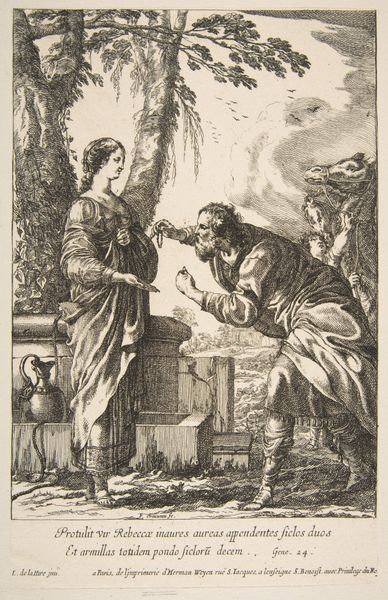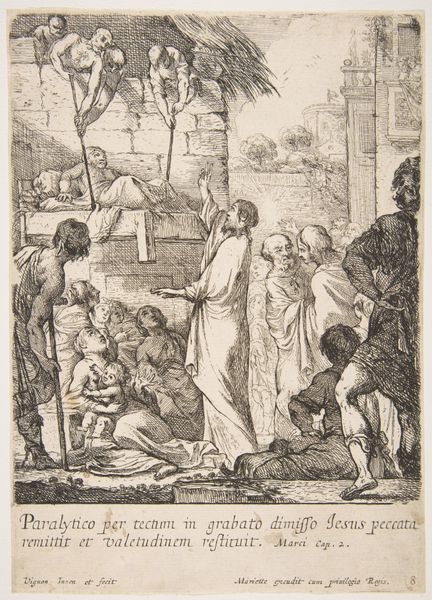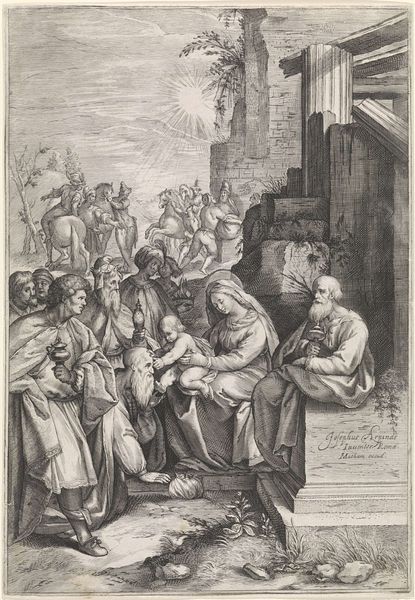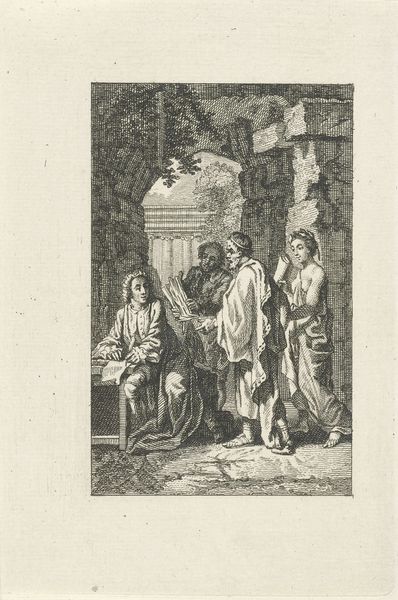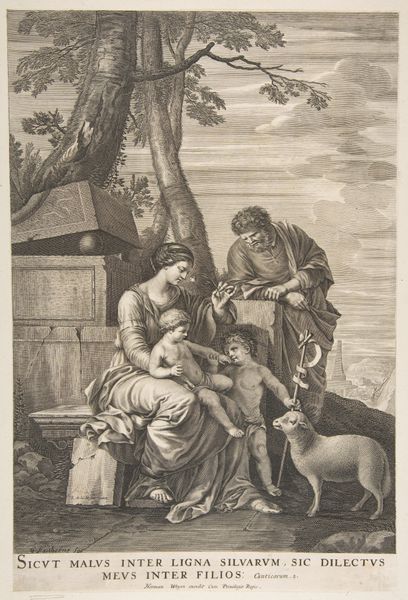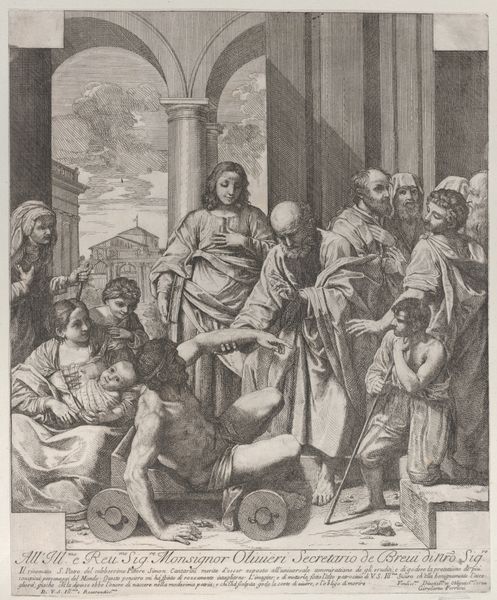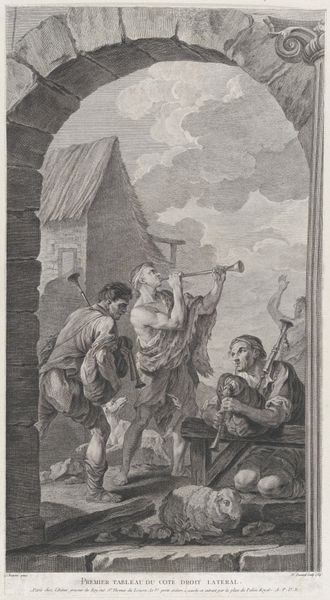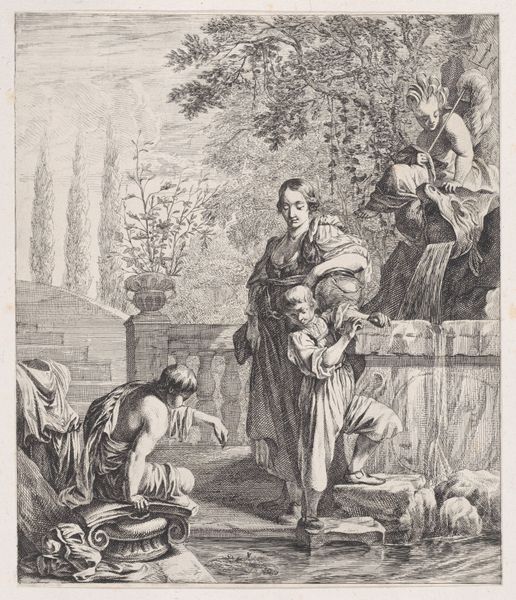
Peasant Family at Table, from the Room of Rustic Scenes, in the Foresteria (Guesthouse) 1757
0:00
0:00
tempera, painting
#
portrait
#
tempera
#
painting
#
landscape
#
group-portraits
#
genre-painting
#
rococo
Copyright: Public domain
Curator: This is Giovanni Domenico Tiepolo's "Peasant Family at Table, from the Room of Rustic Scenes, in the Foresteria (Guesthouse)," created around 1757. It’s tempera on plaster. Editor: It feels incredibly intimate, despite the rather grand setting. Almost like we're catching a glimpse into a real, everyday scene of rustic life. I notice how the light softly envelops the figures. Curator: Exactly. The frescoes originally adorned the walls of the Tiepolo family’s guest house, where it represented a idealized vision of rural life intended for the enjoyment of the wealthy visitors, who never encountered a similar, hard version of a daily living. Editor: So it’s less about documenting the grit of peasant existence and more about curating a desirable lifestyle image? What kind of labor would go into making the pigments for a work of this scale? It’s fascinating to think about how much artisanal effort supports this…idealized leisure. Curator: Precisely. Tiepolo uses those rustic, picturesque scenes to create a sort of charming fiction for the aristocracy. And thinking about materials: tempera requires painstaking layering of pigment—each layer carefully considered. This underscores the inherent artificiality within the frescoes, reflecting the artist’s perspective, instead of some authentic, "objective" representation of the common folk. Editor: Yes, but within those idealized images, we can find insight of labor as well: that woman offering what seems to be food or small merchandise…The casual gestures speak volumes, the seated man with the hat seems worn out but is holding his infant… It shows work's effect. Even filtered through an aristocratic lens. Curator: Good point! It demonstrates how Tiepolo engaged with those visual tropes, using them as a conduit to touch on social issues, albeit gently, through genre painting in the Rococo style. Editor: For me, focusing on process opens another way to understand the social message—not just as a charming view of rustic life but rather it gives clues on the life in rural Italy at that time. Curator: By considering it, we realize this image provided those visitors some carefully crafted scenes of tranquility to appreciate… while most common people just sought their daily bread, in such ways! Editor: I find myself looking closer at the muted tones used on clothing; even wealth couldn't get one out of manual labor, so they probably weren't worried to dye those clothes very often... That's thought provoking!
Comments
No comments
Be the first to comment and join the conversation on the ultimate creative platform.

